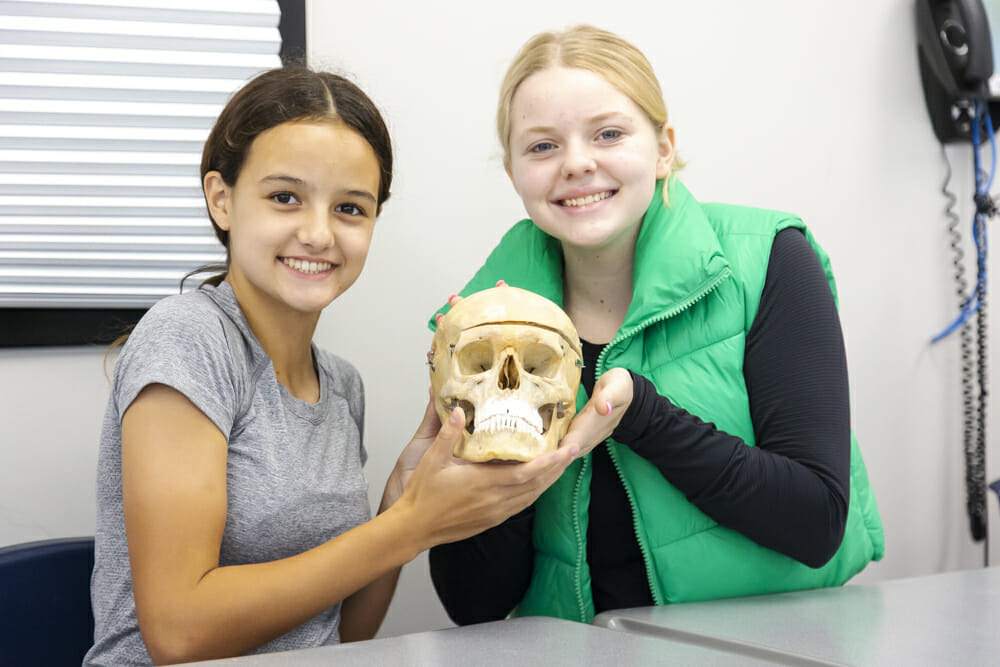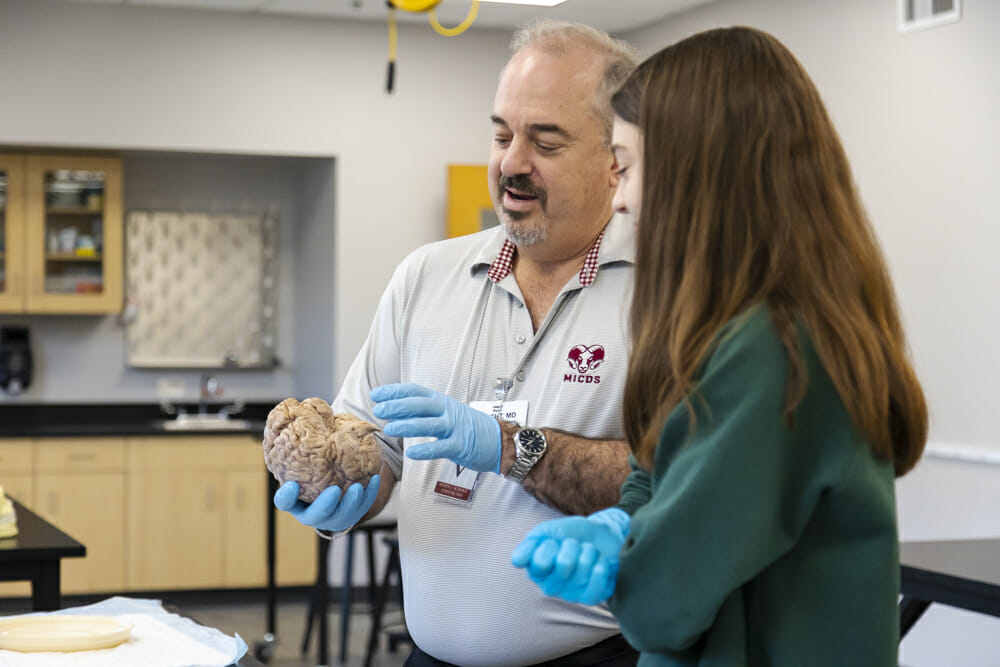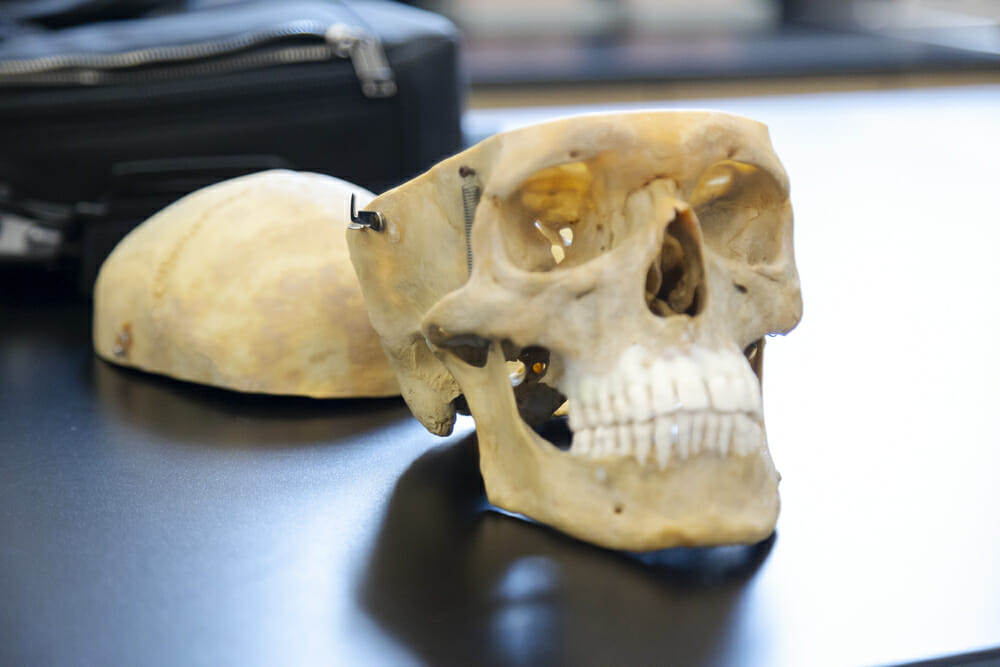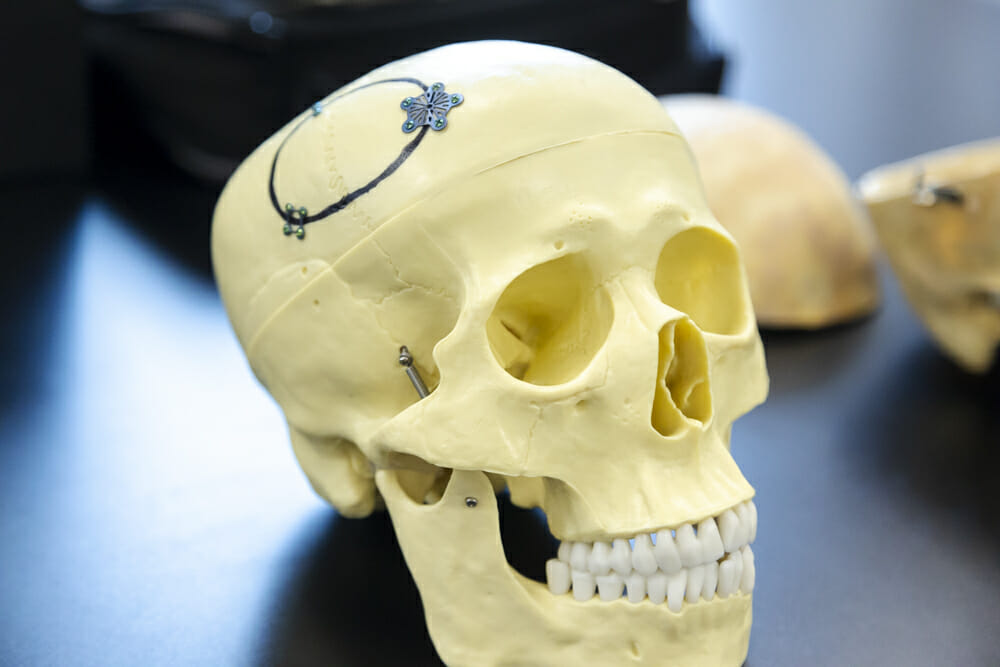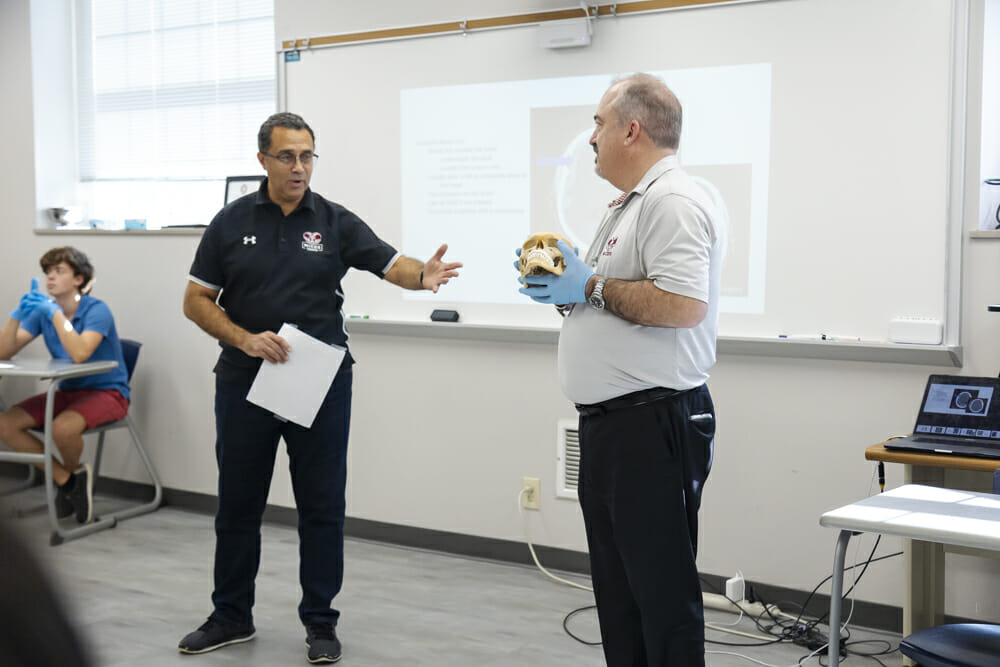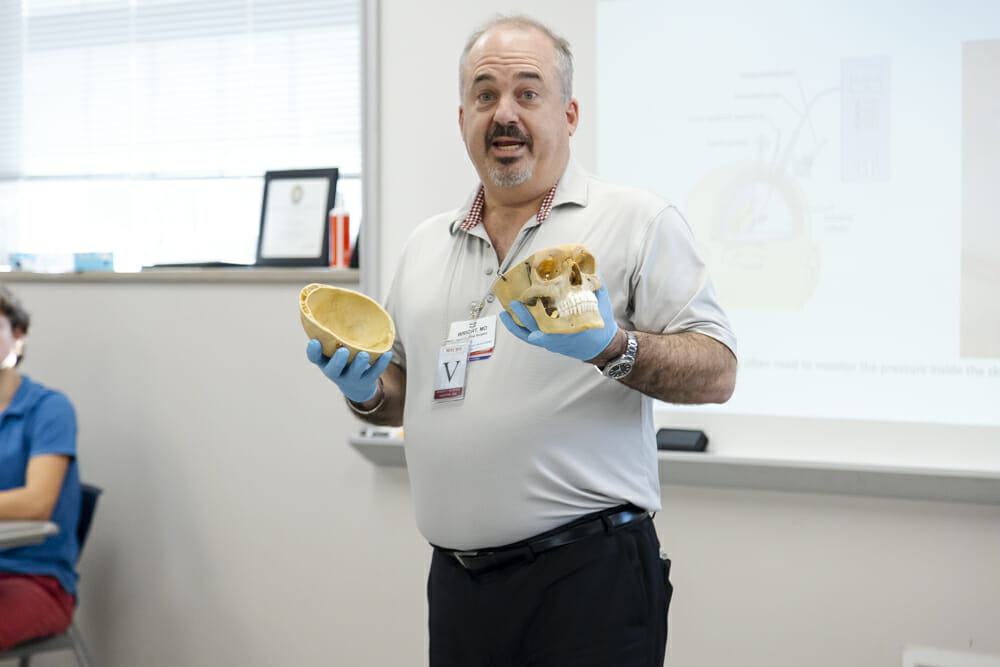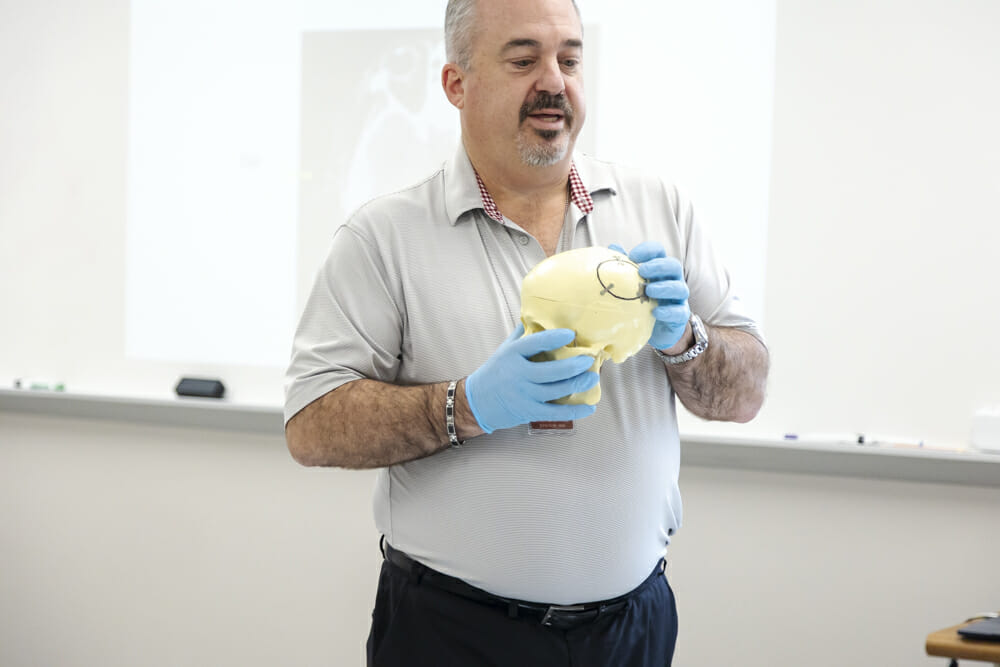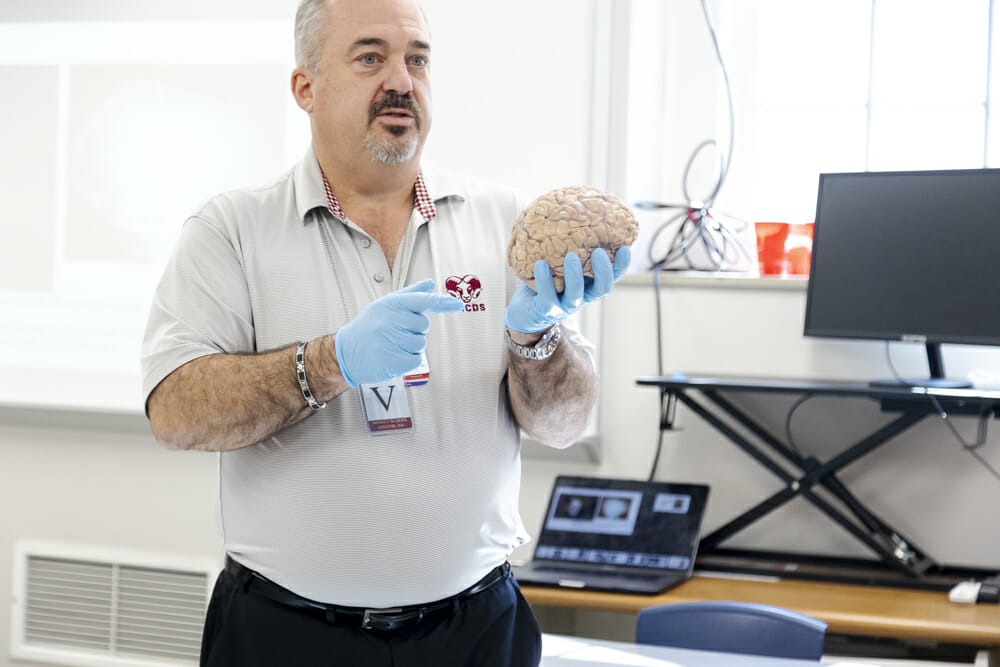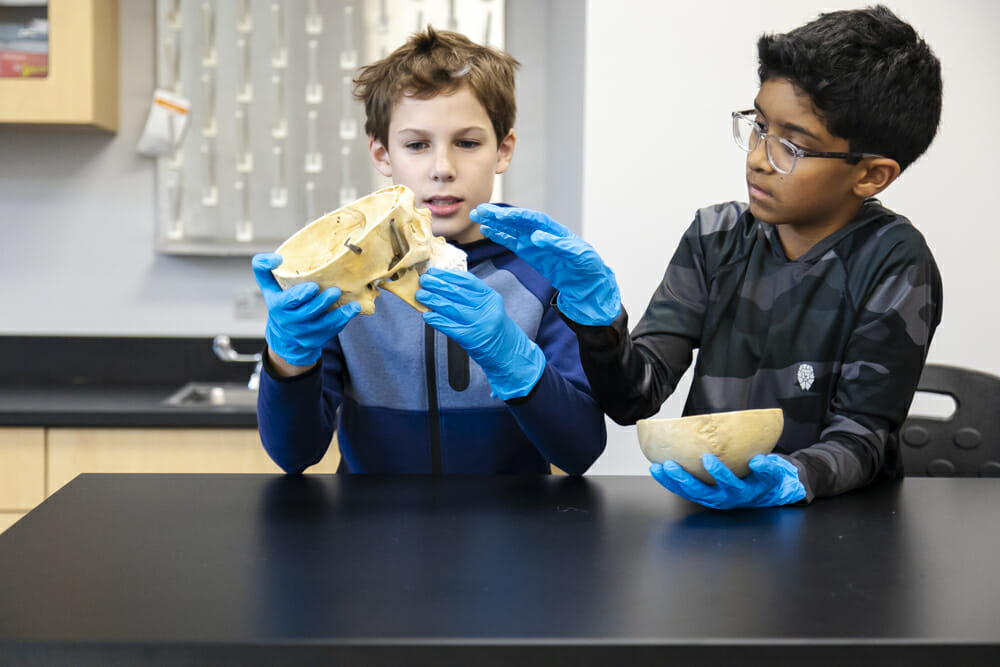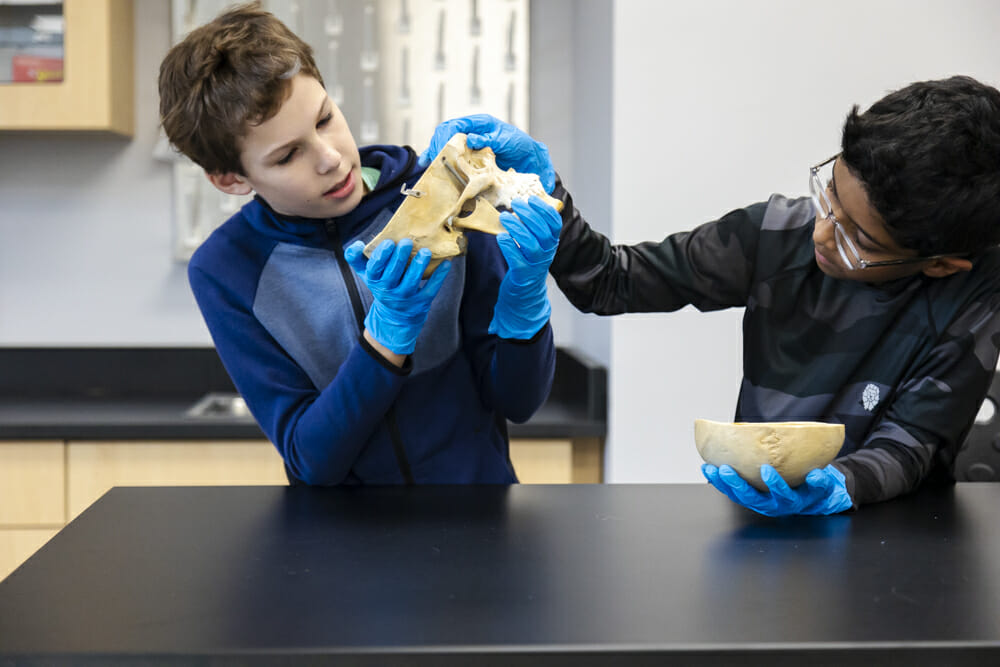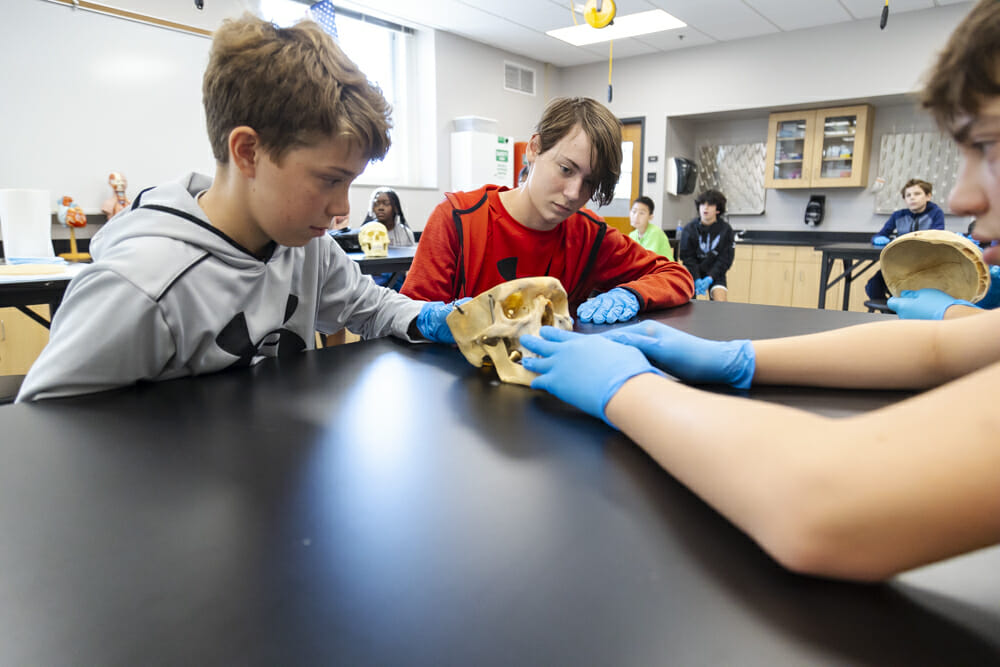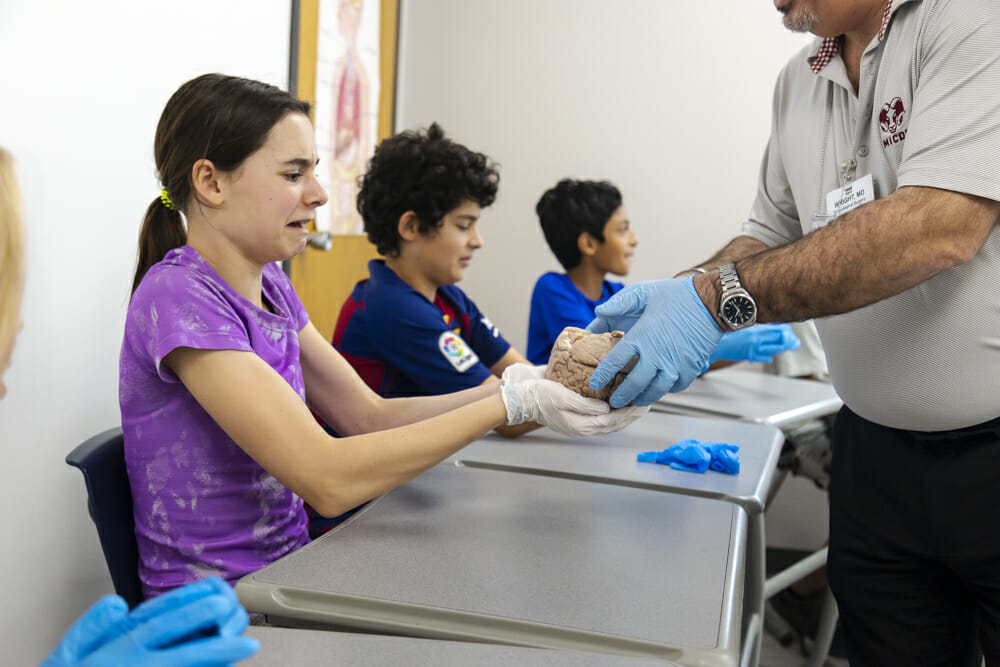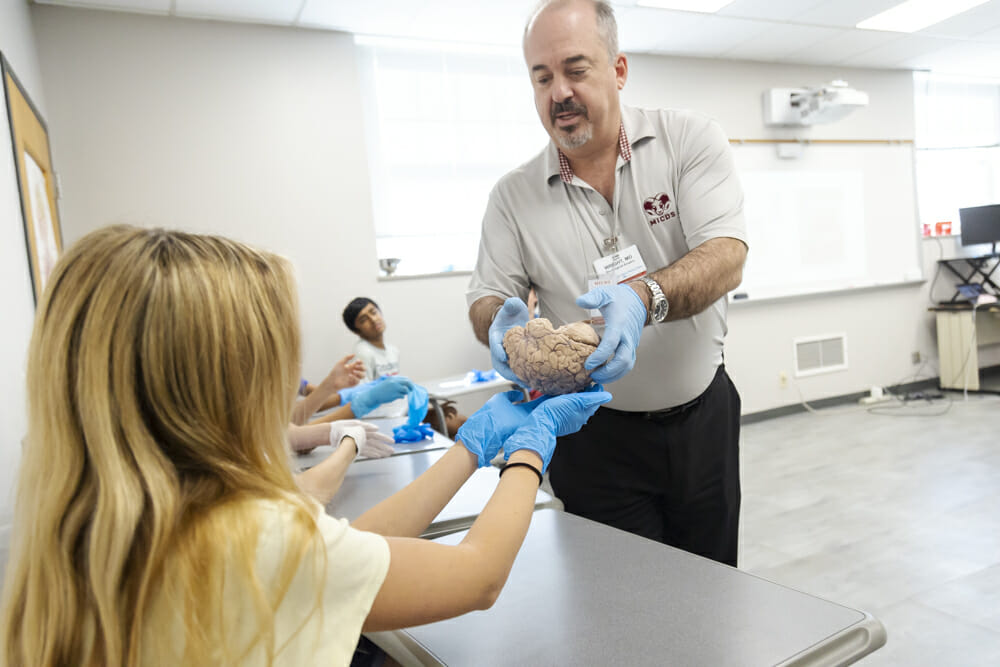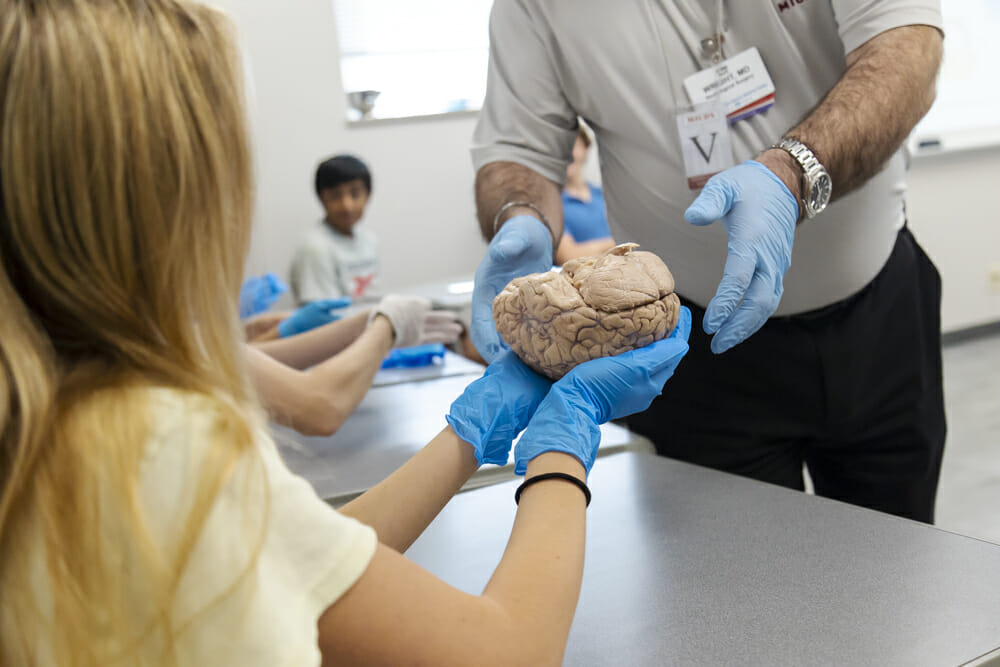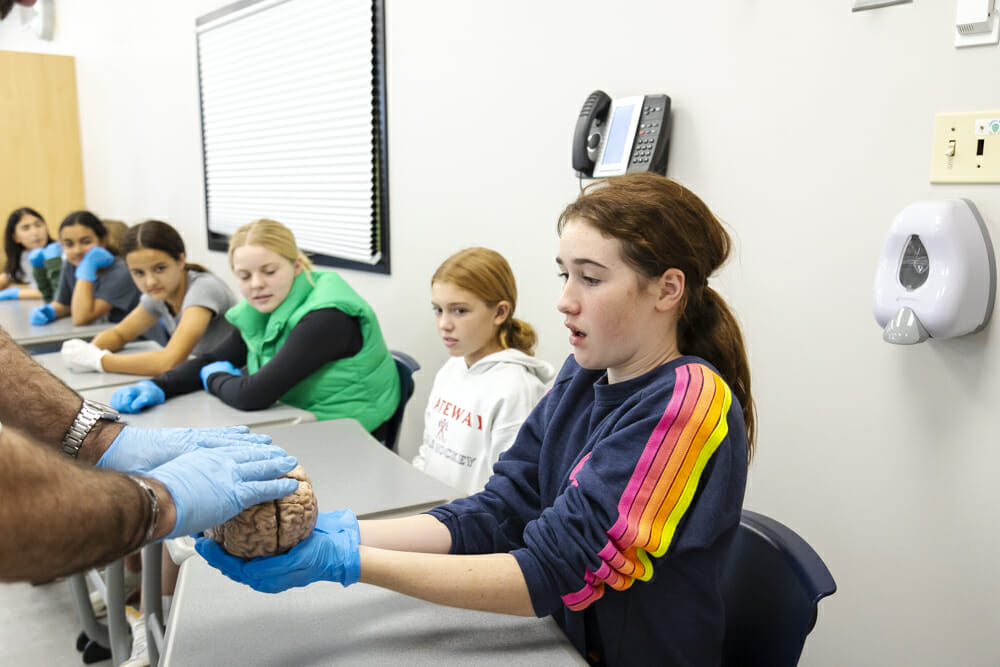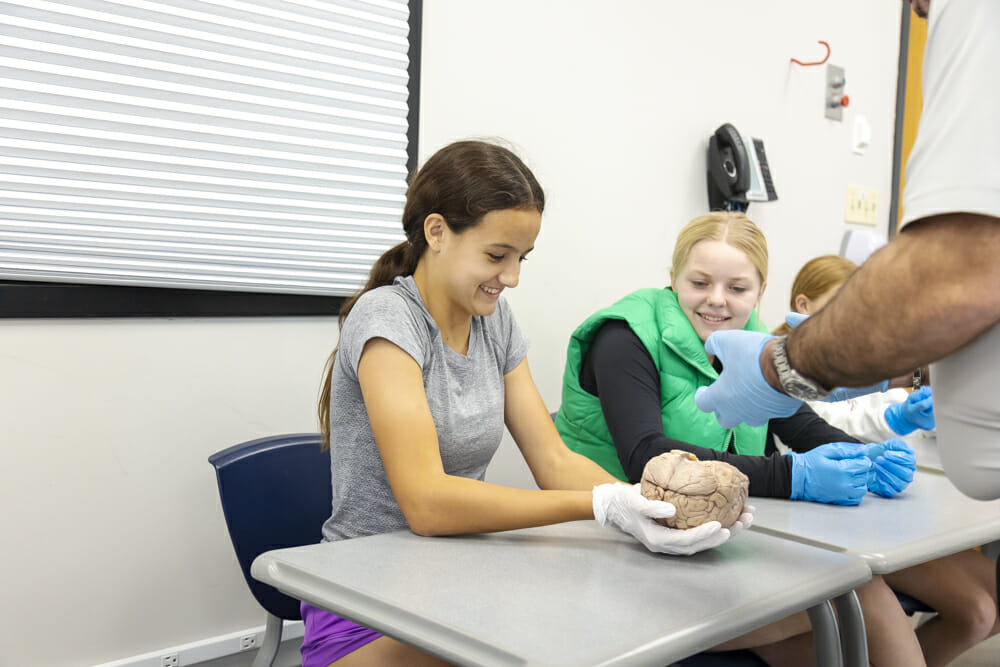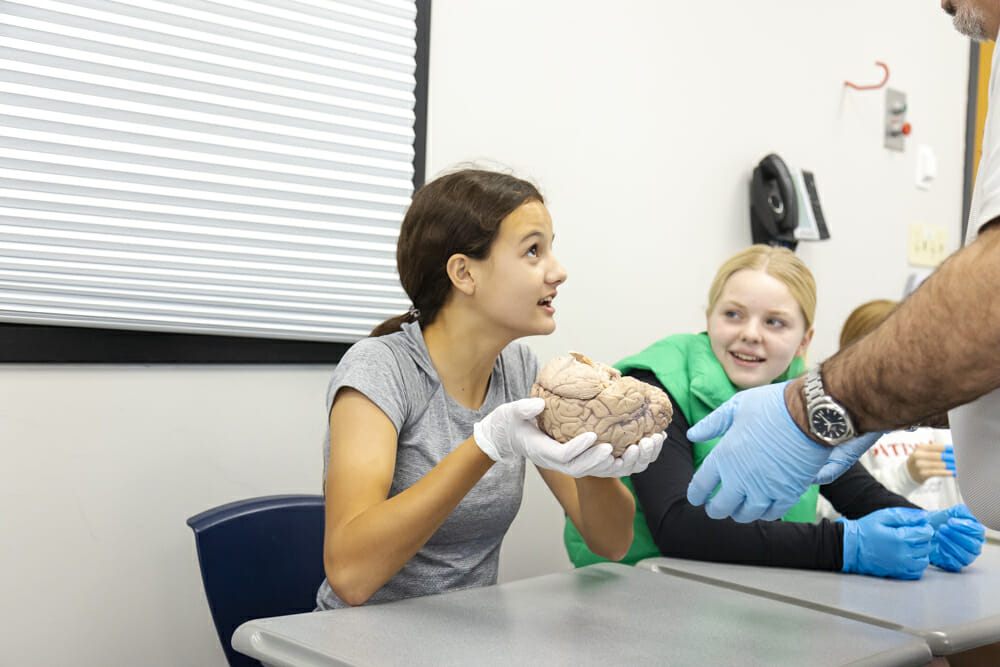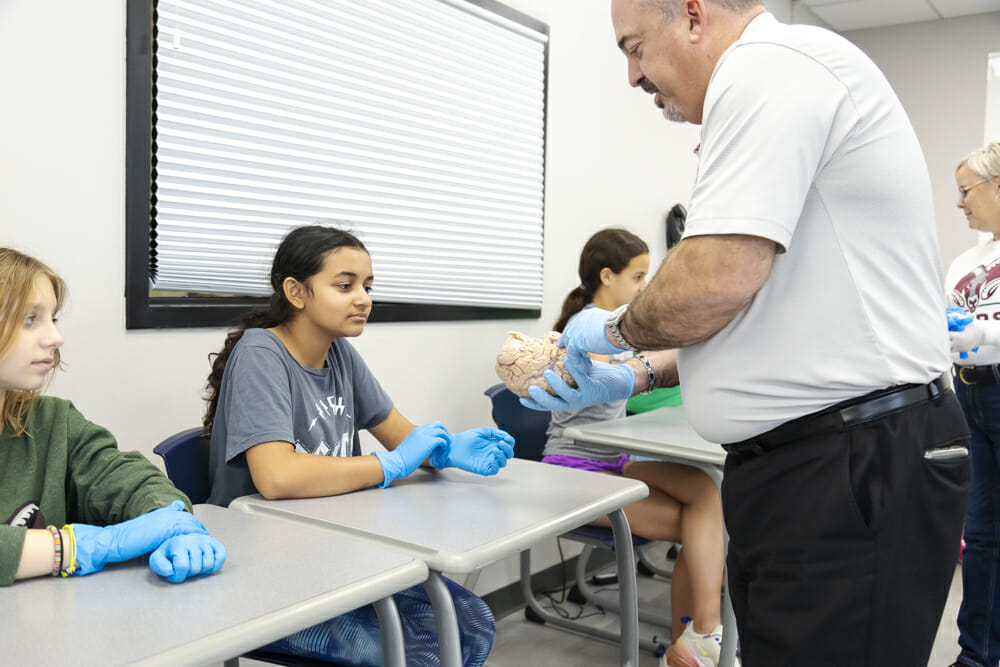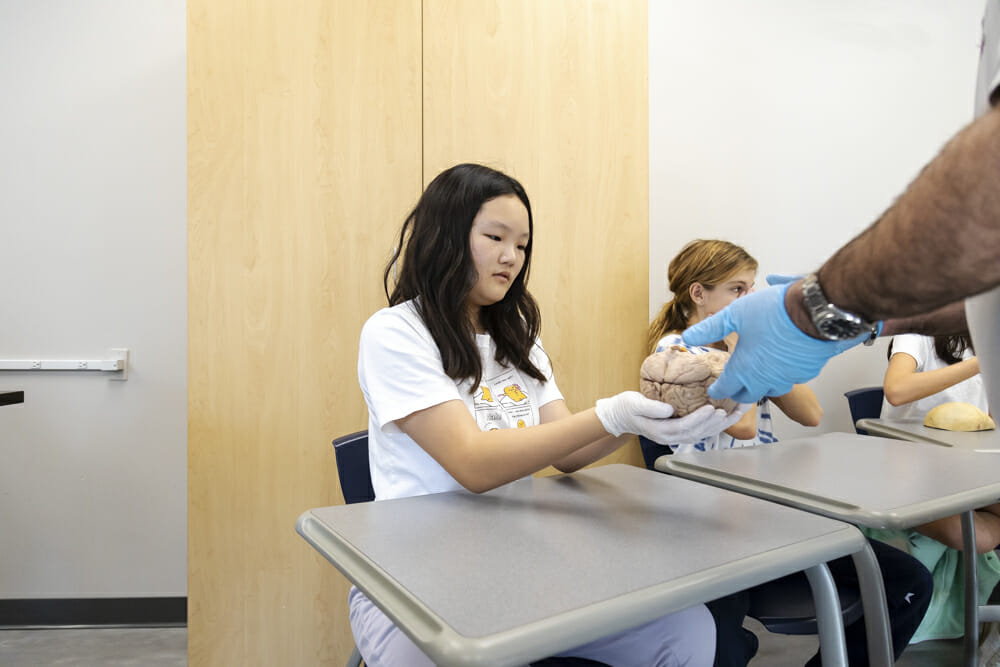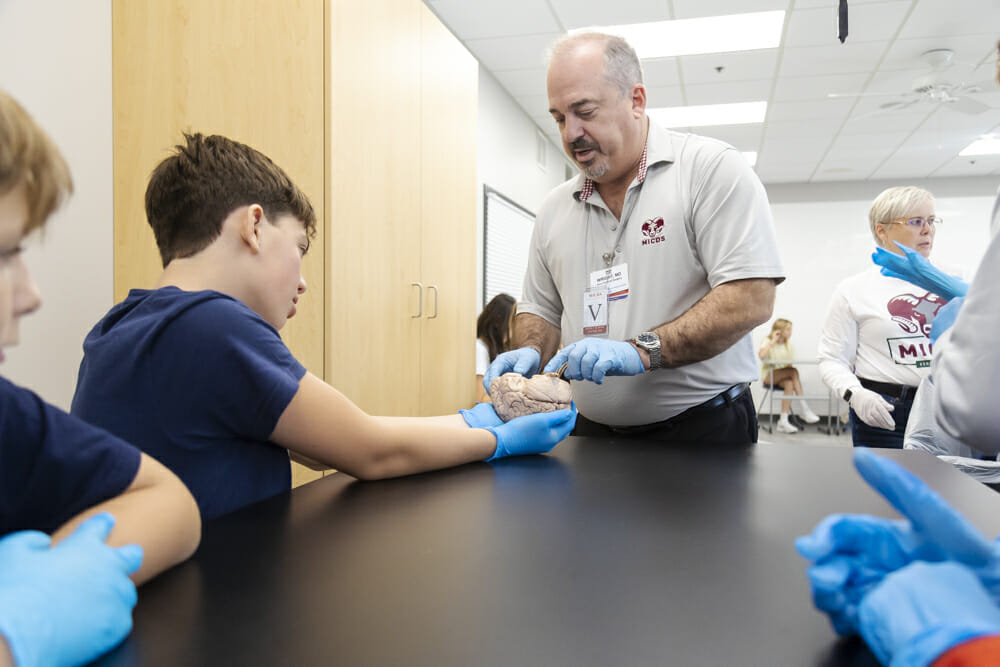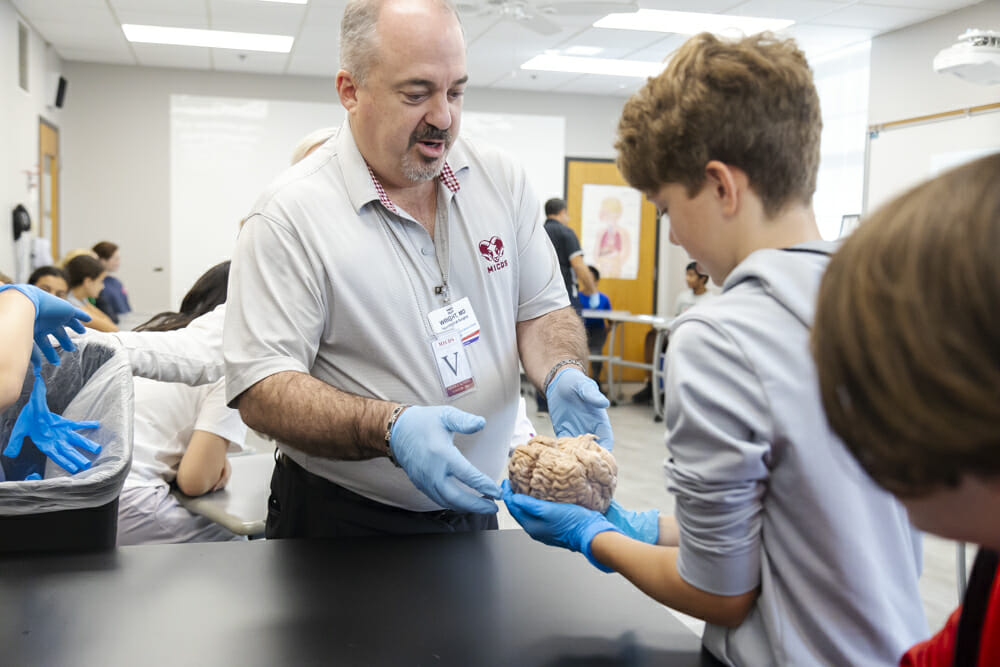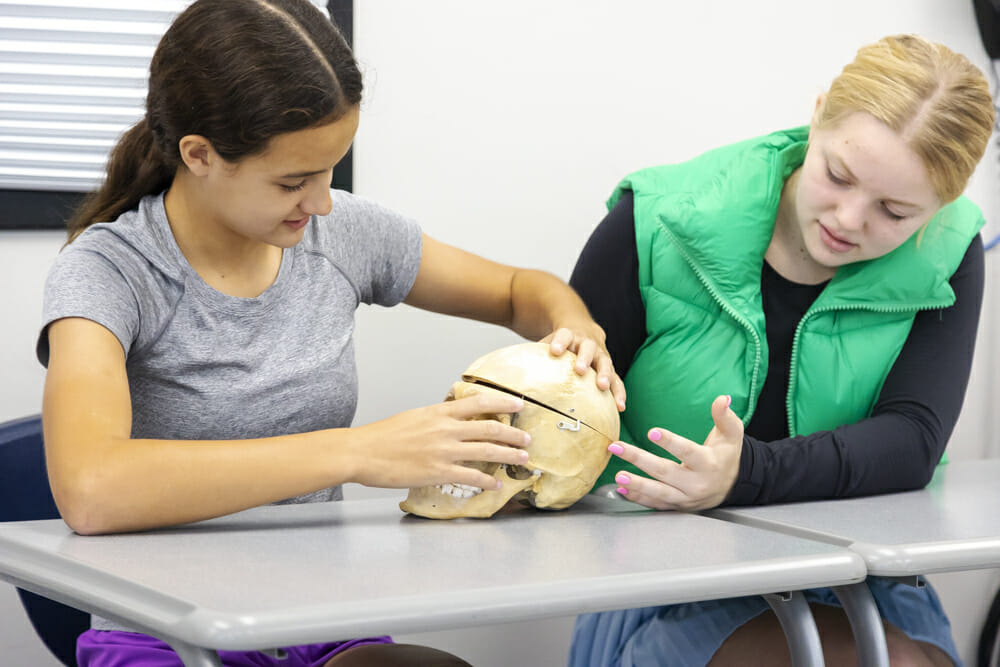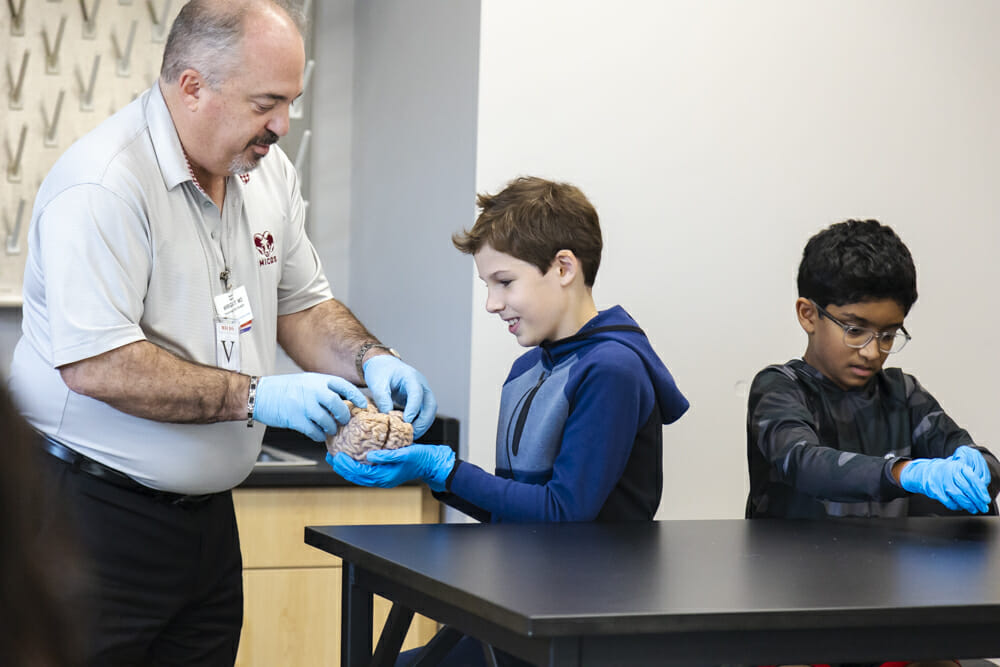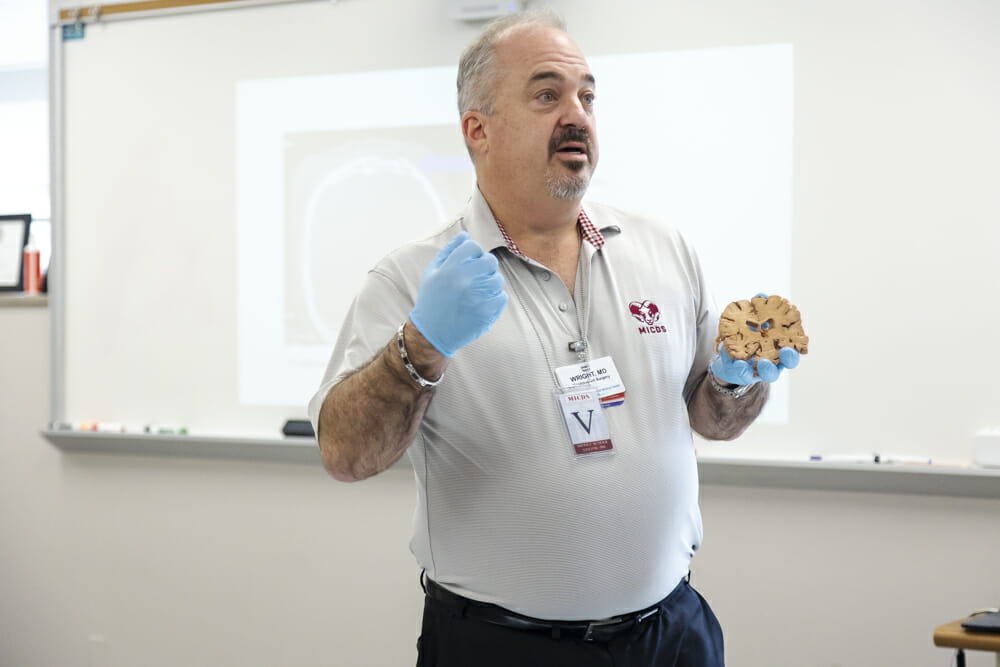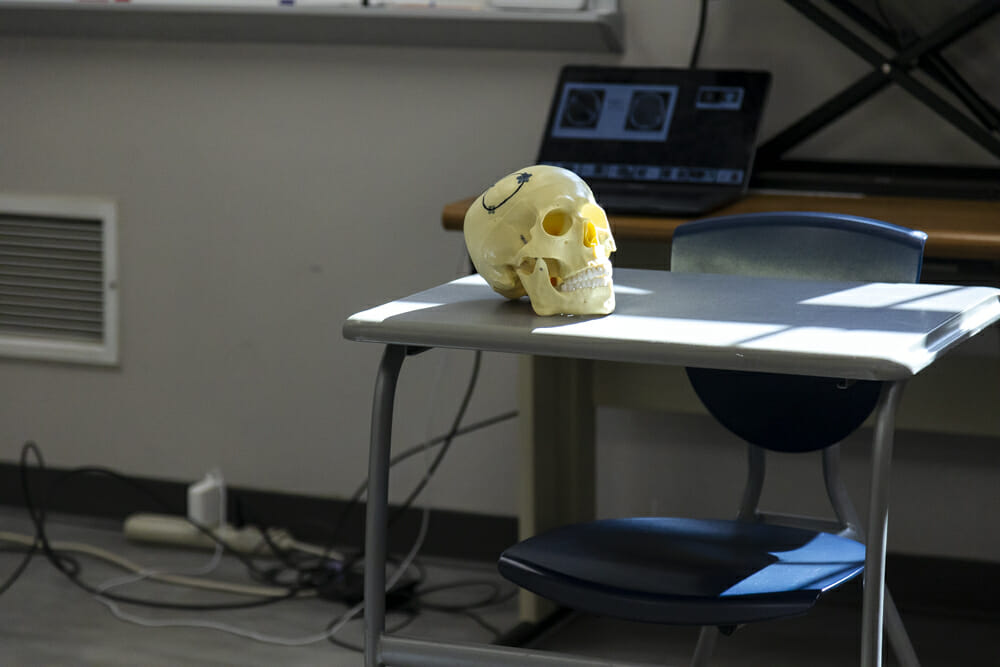How does the brain work? Inquiring seventh-grade minds wanted to know! Middle School Science Teachers Nolan Clarke and Michelle Bouchard invited Dr. Neill Wright, a neurosurgeon at Neurosurgery of St. Louis and parent of Norah ’25, Rowan ’27, and Alayna ’29, to visit with students and give them a peek into real human brains.
Dr. Wright brought a brain, cross sections of a brain, and two skulls to the interactive presentation. After sharing the anatomy of the skull and brain and how it connects to the spinal cord, he shared information on how different parts of the brain work and how each part recovers from injury differently depending on the region of the brain.
Dr. Wright also presented slides of computed tomography (CT) scans of brains with various injuries, such as blood clots from falls, torn arteries, strokes, concussions, fractures, and skull penetration by external objects, and how a craniotomy works to fix some of those issues. He also shared interesting technological tools they use to monitor swelling in the brain and administer medications to reduce swelling.
For the main event, Dr. Wright passed a brain around the room, allowing students to hold it and feel its weight and level of «squishiness.» Students asked engaging questions about memory, concussions, brain transplants, and more.
Lily Harris ’28 was excited to learn about the brain and said, «I learned about many things, such as brain freezes and seizures. It was very interesting getting to hold and see a real human brain and skull, and it inspired me to want to be a neurosurgeon.»
Lillian Ott ’28 enjoyed seeing and feeling a real human brain. «It helped me realize and make connections between what we were learning and what it actually looks like inside our body,» she said. «It was cool to learn what happens to the skull and brain as you grow and what happens when you have a brain freeze or headache. We learned that your brain grows as you grow, so your skull also grows with it. When you are an adult and stop growing, the skull fuses together in the places that were growing. We learned that the more important things were more protected and in the center of the brain. This happens because the most important stuff needs to be in the safest spot, which is the center. One thing that surprised me was how light the skull was. I expected it to be a lot heavier because it is made of bone, but it was surprisingly light. Another thing that surprised me was how the brain was squishy and firm at the same time. You could squeeze it a bit, but it was also a bit hard.»
«When people told me I would get to hold a human brain, I felt nervous and excited at the same time,» said Audrey Taves ’28. «It was cool being able to see and learn about the brain. Dr. Wright passed around a real human skull for everyone to touch and see. Then it was time for the brain, each of us got to hold it and feel how dense it was. As he walked around, he answered all of our questions so we could find out more about the brain. This even caught the attention of some high school students who came down just to see it. Overall this was one of the coolest experiences in science I had ever been a part of.»
Devin Garner ’28 thoroughly enjoyed the experience. «One of my favorite parts was handling a real skull and brain. Another part was looking at the slideshow and seeing various injuries to the head. I found it surprising that the guy who took a pole through the skull survived it. What impressed me was how long Dr. Wright has been in the field of neuroscience/surgery and also how heavy the brain was.»
«I thought the experience was thrilling,» said Bruce Elvin ’28. «Dr. Wright taught me a lot. But what surprised me the most was how much brain tissue remained intact despite the procedure. I also discovered that the brain has ventricles that allow it to both nourish and cushion the brain and that your skull serves multiple purposes such as protecting your brain.»
Wyatt Schuckman ’28 enjoyed learning about the measurements the body takes to protect the brain. «I enjoyed learning about Phineas Gage, the man who took a rod through the skull and still survived. The experience was very interesting and was capped off by being able to hold an actual brain.»
«When he passed around the human brain, I was very intrigued by all the different folds of the brain,» said Abby Walsh ’28. When I had the brain in my hand, it was very heavy. We got to look at a real human skull, and it was cool to know that this skull was once a part of a living human. I loved learning about the brain and the skull and the major effect they have on our daily life.»
Liam Hogan ’28 added, «It was awesome to see a real brain and feel it. After talking about these topics in class, it was nice to talk to someone that is an expert in this area. Thank you to Dr. Wright for sharing his time and talents with us!»
Dr. Wright was equally pleased with the visit and said, «I thoroughly enjoyed my visit with the seventh-grade science class! Great engagement, great questions!»
Thank you to Dr. Wright for sharing his brains with us!
